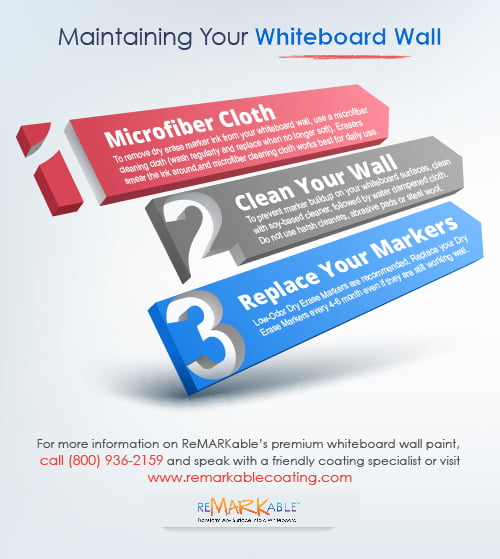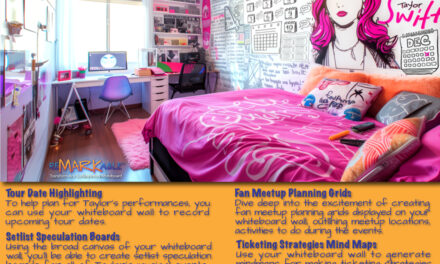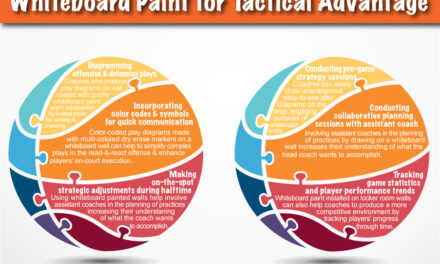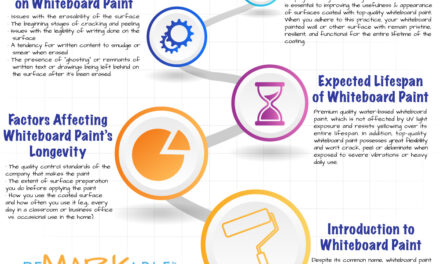
Maintaining Your Whiteboard Wall
Introduction: When installed according to the application instructions supplied with their packaging and in our online video tutorial, our premium whiteboard coatings are easy to erase, easy to maintain, and highly durable. However, it’s also important to use only high-quality low-odor dry erase markers for writing and drawing on our surfaces, microfiber cloths, towels, or mitts for erasing them, and our proprietary water-based whiteboard surface cleaner for long-term maintenance. When our cleaner is not available, a solution of warm water and a gentle soap-based cleaning product or dishwashing soap may be used instead.
Use A Microfiber Cloth to Clean Your Whiteboard Wall
When they are applied properly and used exclusively with high-end low-odor dry erase markers, our premium whiteboard coated surfaces erase easily every time with a microfiber cloth, towel, or mitt. If the instructions for application are followed closely, this will always be the case. However, sometimes even professional painters fail to read our easy-to-follow directions, so they apply our coatings incorrectly, thus affecting the surface’s ability to be written on and effectively erased. We conduct five quality tests on each batch of our premium whiteboard paint before it’s placed in bottles and shipped to our customers, so we know before we send our products to you that if applied correctly they will always erase well with just a microfiber cloth.
To remove dry erase marker ink from your whiteboard painted wall, use a clean microfiber cloth that you wash regularly, and replace the cloth when it loses its softness. Avoid using a standard whiteboard eraser for this purpose because it will just smear the ink around on your wall without getting it off, so a microfiber cloth always works best for regular cleaning and maintenance.
If you leave markings on your surface for a long period of time, or if you don’t use high-quality low-odor markers, you might need to use a cleaning solution on your wall along with a microfiber cloth to get it clean. For this purpose we highly recommend our proprietary water-based cleaner, which is guaranteed not to damage your surface if you just spray it on, wipe the surface with microfiber material, and then follow this up by rubbing with water and a microfiber cloth. Unlike other whiteboard paint products on the market, no special conditioners need to be applied to our whiteboard surfaces before you start using them, or at any time thereafter.
Clean Your Wall
To prevent dry erase marker ink from building up on your whiteboard painted surface, you can clean it periodically with a gentle water-based cleaner and a microfiber cloth followed by a microfiber cloth moistened with water. Avoid using general household cleaning products such as vinegar, ammonia, window cleaners, cleaners containing bleach or alcohol, scouring powders with ingredients like calcium carbonate, abrasive cleaning pads, sponges, rags, or steel wool. In addition, if your whiteboard coated surface is installed in a facility that has a janitorial staff, it’s important to let the staff and your office team members know that they should never use any type of cleaning product that contains harsh ingredients on your whiteboard painted wall, even products that are specifically formulated for use on traditional whiteboards. This is so because whiteboard coated surfaces are different from standard framed whiteboards made of melamine, porcelain, glass, or some other material. If you try to use a traditional whiteboard cleaning product on your whiteboard coated surface, you can damage its finish and thus negatively affect its ability to be written on and properly erased.
The water-based formula of our proprietary water-based cleaning solution is specifically designed for use on our whiteboard coated surfaces, so it’s guaranteed not to compromise the finish of your wall no matter how often you use it. Just spray a little of the solution in areas of your wall that need cleaning then gently wipe them with a microfiber cloth. If you’re in a pinch and don’t happen to have our cleaner on hand, it won’t damage your wall to clean the surface with a solution of water and a mild soap-based cleaner or dishwashing soap. However, these types of products leave behind a slick, soapy residue, so you’ll need to thoroughly wipe the residue off with a microfiber cloth dampened with water right after you use them. This is also true of our proprietary cleaner. It’s important not to leave residue of any type on your whiteboard painted surface because built-up residue can possibly affect the way markers function on the surface. For example, areas covered with residue might resist dry erase marker ink and cause gaps when you try to write or draw on them. So always follow up on cleaning your surface by rinsing it with a water-dampened cloth. Since the surface is completely impervious to water, you can use as much water as you like for rinsing.
If you remember to always rinse with water after cleaning your surface, you will never have problems with surface damage, discoloration, or resistance to marker ink. However, it’s also important to note that you should not use paper towels when you clean or rinse your whiteboard surface, because some brands of towels have an abrasive effect due to their composition. If you have any questions or concerns about using a cleaner other than our own proprietary whiteboard coated surface cleaner, or about any other subject related to cleaning and maintaining your whiteboard painted surface, just contact our highly experienced customer support team, and they will guide you in the safe use of alternative cleaning products or other matters.
Replace Your Markers
Nowadays dry erase marker inks have four main ingredients:
(1) a carrier or solvent (e.g., the alcohol ethanol or isopropanol or the chemical methyl isobutyl ketone) that cuts down on smearing of the ink and helps it to dry;
(2) pigments that provide the coloring for the ink;
(3) a release agent that prevents the ink from bonding to a surface; and
(4) polymers or resins that allow the ink to spread smoothly on a surface and not clump up. Polymers or resins also help the ink to hold together and avoid adhering to a surface.
Dry erase markers come in two varieties: those of high quality and low odor that use alcohol solvents to carry their pigments, and those of low quality and high odor that use methyl isobutyl ketone as their solvent. Most of the many brands of markers available today, such as Expo 2 Dry Erase Markers, contain alcohol-based solvents; these products are much safer to use and easier to erase than low-quality brands. In general, Expo 2 marker ink and the ink of other high-quality markers can be easily erased with light pressure even if the ink has been left on your whiteboard surface for a long time.
Also, regarding health safety, it’s always best to choose a quality alcohol-based marker over other types that may be ketone-based, because data from the US Environmental Protection Agency (EPA) shows that humans and animals exposed to methyl isobutyl ketone can experience serious issues with their eyes, nose, throat, liver, kidneys, and respiratory system. Ketone-based dry erase markers also have a negative impact on the environment and some marker manufacturers have stopped making them altogether due to the air-quality standards in their states.
Moreover, as mentioned above, besides being safer for your health, high-quality low-odor markers will always be easy to write with and erase from your whiteboard painted wall. However, it’s a good idea to replace your dry erase markers every four to six months even if they are still working fine, because the chemicals inside can deteriorate and cause problems with the legibility of your writing, and old markers are also prone to smudging. Replace your markers as soon as you begin to notice the occurrence of smudging or problems with writing and drawing.


























































































![ReMARKable’s Winter Sale is Here! [25% Off + Free Shipping]](https://www.remarkablecoating.com/wp-content/uploads/2018/01/Red-Tag-Winter-Fashion-Facebook-Post-1-440x264.png)















![Drive Your Organization Into Openness and Watch it Expand [20% Off Whiteboard Paint]](https://www.remarkablecoating.com/wp-content/uploads/2016/04/Drive-Your-Organization-Into-Openness-and-Watch-It-Expand.-1-440x264.jpg)

![30% Off St Patrick’s Day Sale! [Details Inside]](https://www.remarkablecoating.com/wp-content/uploads/2016/03/Glorious-1-440x264.png)


![Giant Leaps Forward Require Big Spaces. [Leap Year Sale Event!]](https://www.remarkablecoating.com/wp-content/uploads/2016/02/Giant-Leaps-ForwardRequire-Big-Spaces-440x264.jpg)

















![ReMARKable Summer Sale 2018 [28% Off Whiteboard Paint]](https://www.remarkablecoating.com/wp-content/uploads/2018/06/Blue-Simple-Line-Beach-Facebook-Post-1-440x264.png)




































































































































































































0 Comments